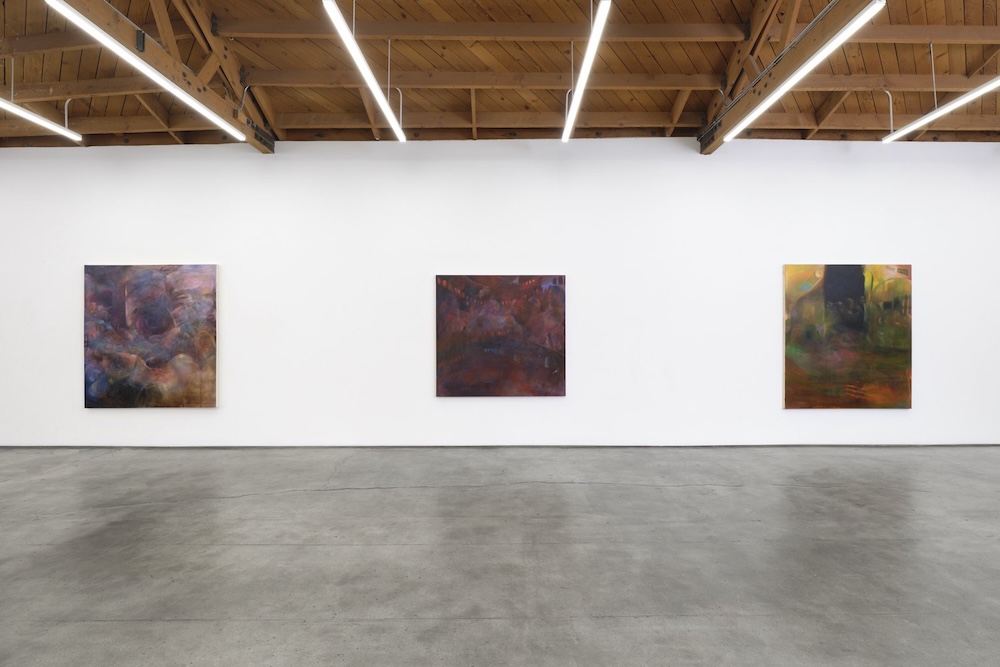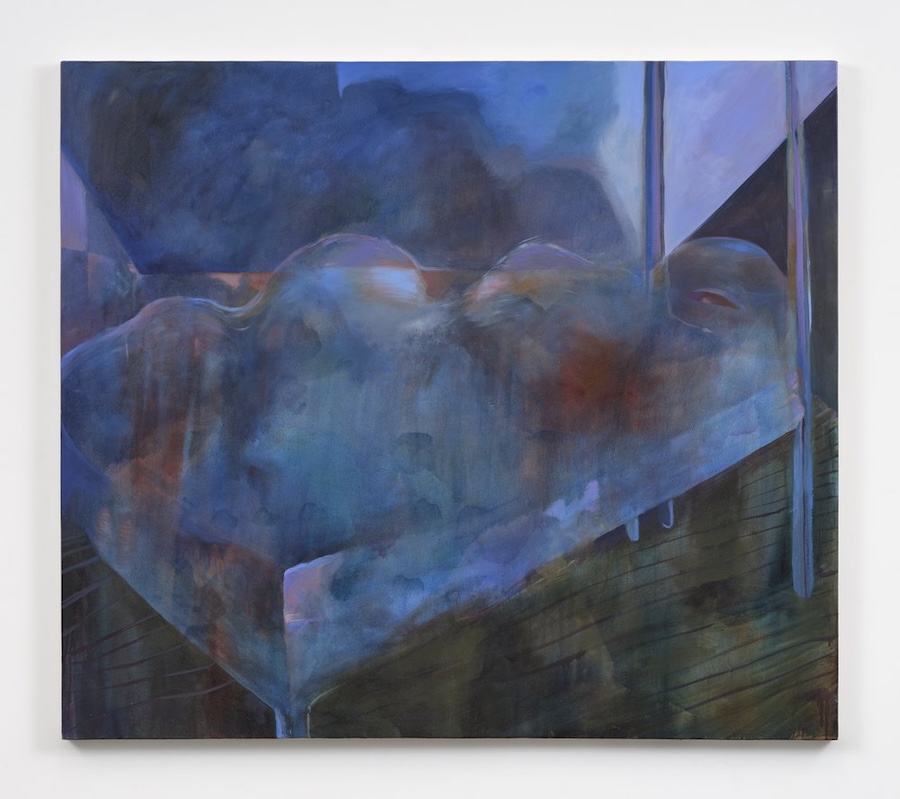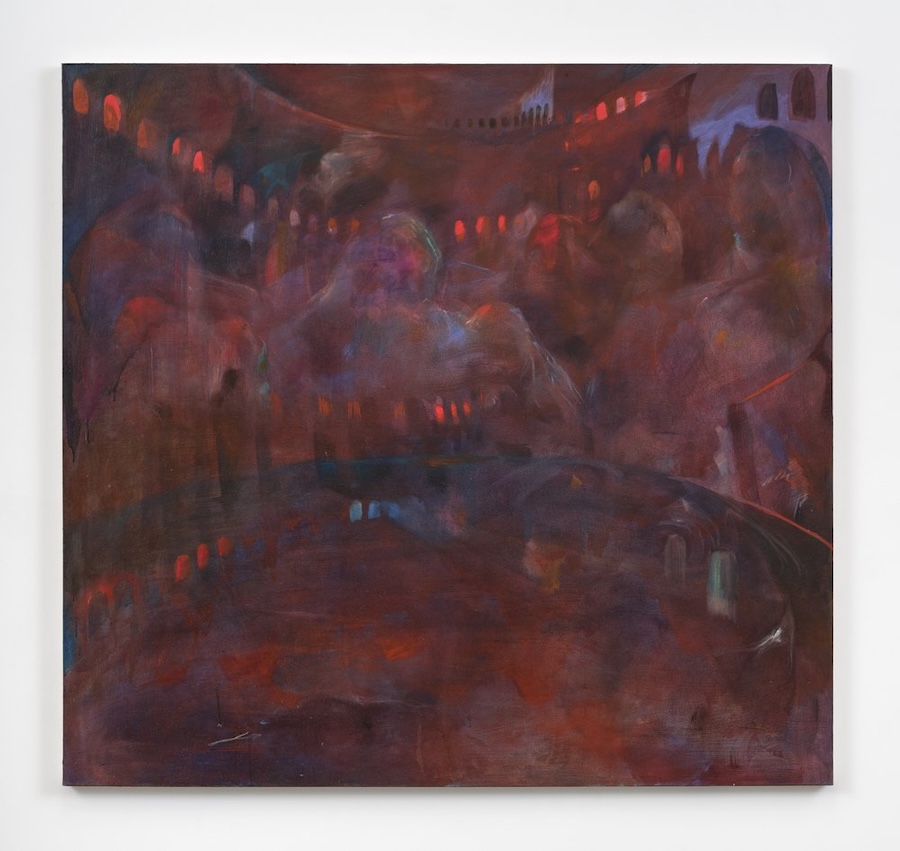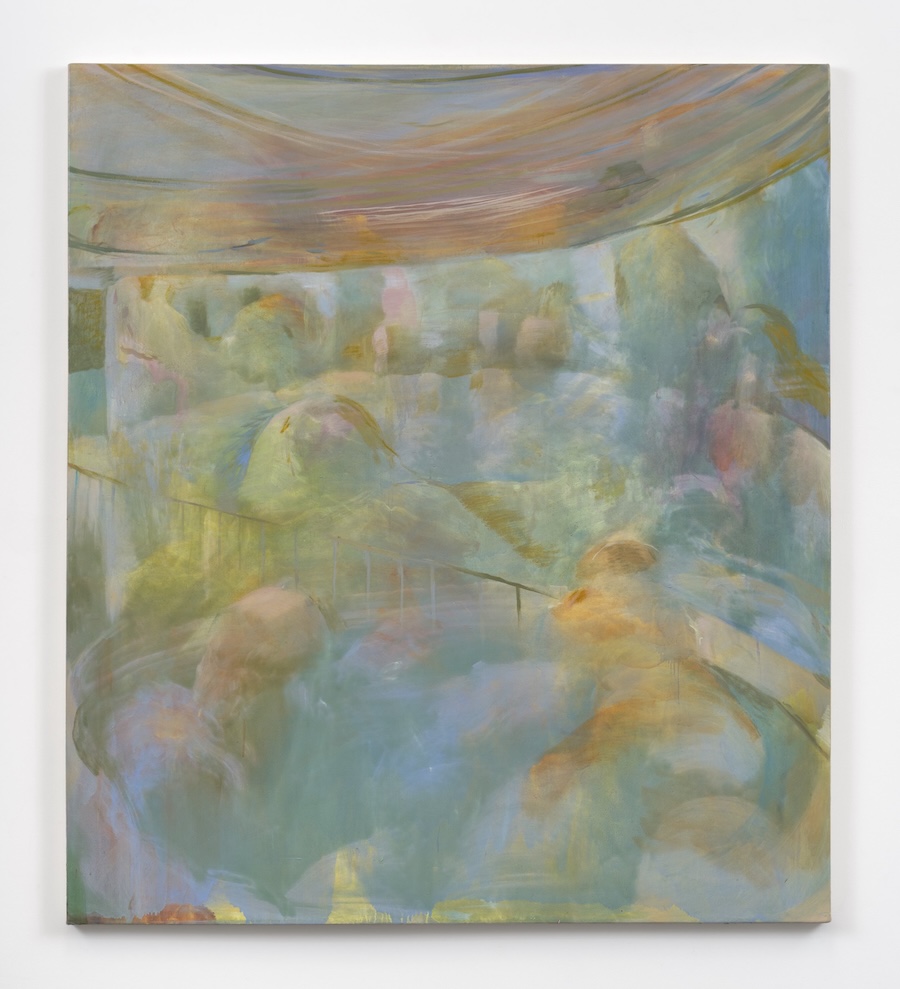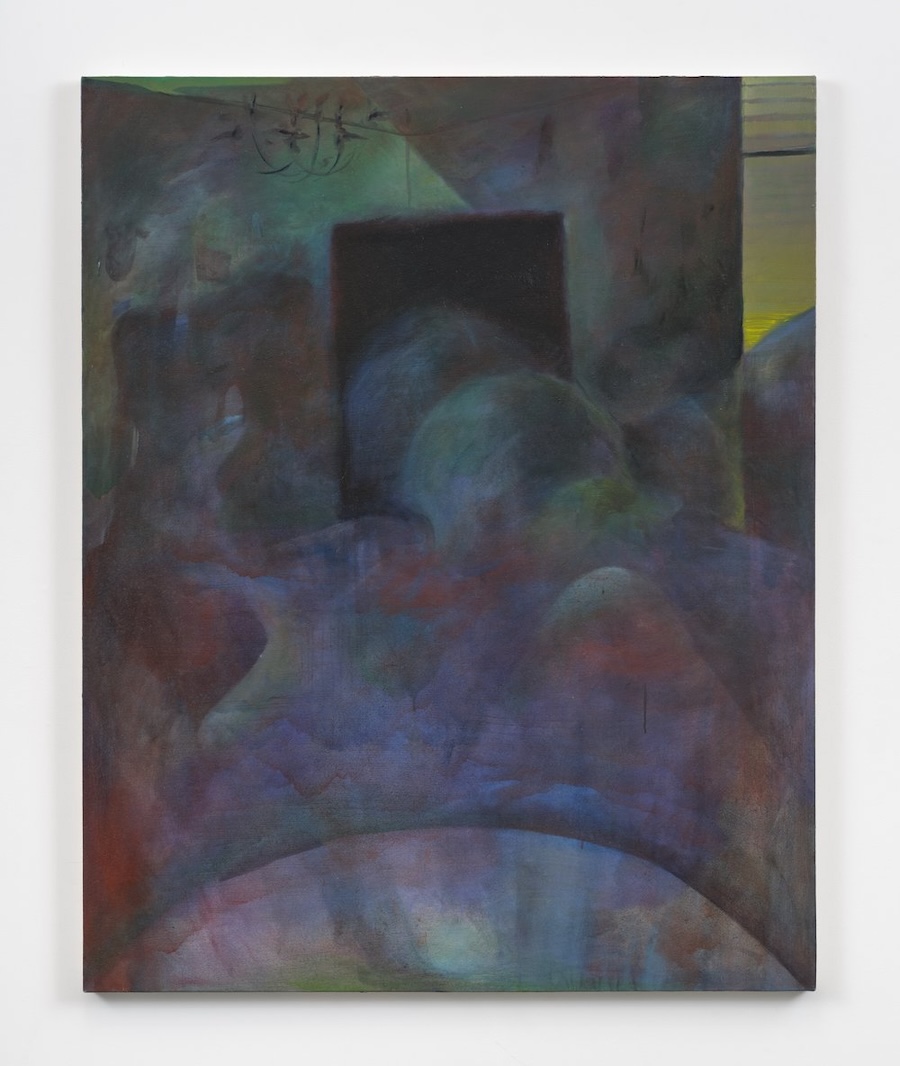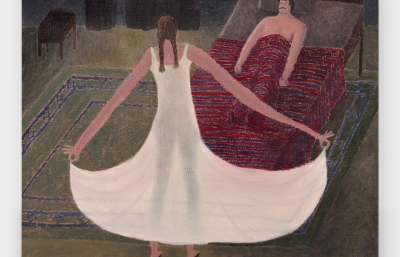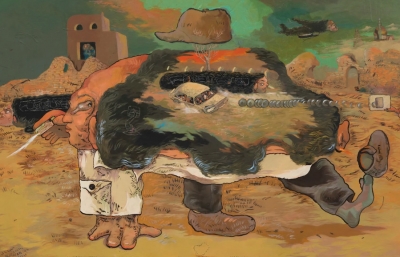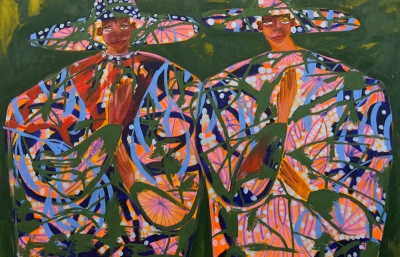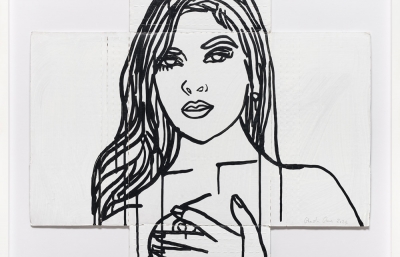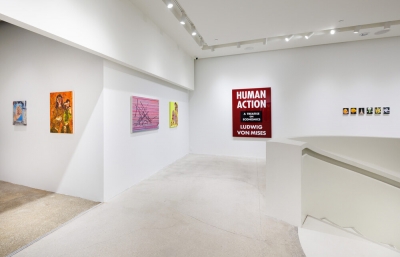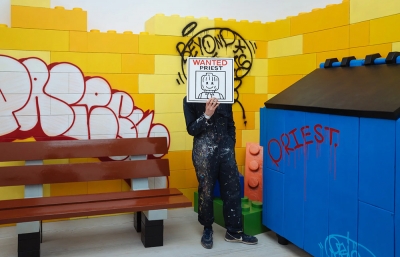Megan Mulrooney is pleased to present Show Me What I Don’t Know, an exhibition of new paintings and a sculpture by Grace Bromley. This will be her first solo show with the gallery and will be on view through August 30, 2025.
Across mid- to large-scale canvases, Bromley stages familiar interiors – bedrooms, hallways, the corners of rooms – as sites of psychological charge and transformation. Working with thinned paint and soft rags rather than brushes, she builds each composition through a process of slow accumulation and removal. This layering, revision, and restraint mirrors the emotional atmosphere of the paintings themselves: forms hover into visibility before receding again, yielding images that feel as if they are holding something in place even as it slips away. Curtains conceal as often as they frame; flooded floors reflect light without revealing a source; beds appear recently vacated, but it’s unclear by whom.
“These spaces hold the residue of presence without explicitly depicting the figure,” Bromley writes. “With this work, I’m asking the viewer to sit with me in uncertainty.” The figures may be absent, but their imprint lingers. The paintings evoke a kind of spectral return – what Bromley describes as the feeling of being “a ghost in your old life, unable to fully re-inhabit something you’ve left behind. There’s no space carved out for you anymore; it’s already changed shape.”
Bromley draws from fiction, theater, and classic fairy tales as loose scaffolding, using them less as narrative sources than as formal and psychological cues. She’s particularly interested in figures who defy expected scripts: the Princess who detects the pea beneath her tower of mattresses, the wife who opens Bluebeard’s forbidden door. These references aren’t depicted so much as diffused through the work’s internal logic, where beds become emblems of emotional resistance as much as rest, and doorways serve as thresholds between the unknown and the unknown.
The exhibition’s sole sculptural work, I Remember Anyway, functions as a kind of anchor to the surrounding paintings. A table and two chairs – with exaggeratedly sharp legs – are draped in a painter’s cloth, suggesting a dinner, a séance, or furniture left covered to protect it from time. Scratched faintly into the tabletop is the outline of a theater, revealed only through a light rubbing of graphite. The work references a childhood memory: Bromley and her sister were allowed to etch secrets and drawings into their kitchen table – one piece of furniture their grandmother permitted them to “ruin.” Here, the table becomes a kind of reliquary, a structure for memory, grief, and the desire to connect with what’s already gone.



